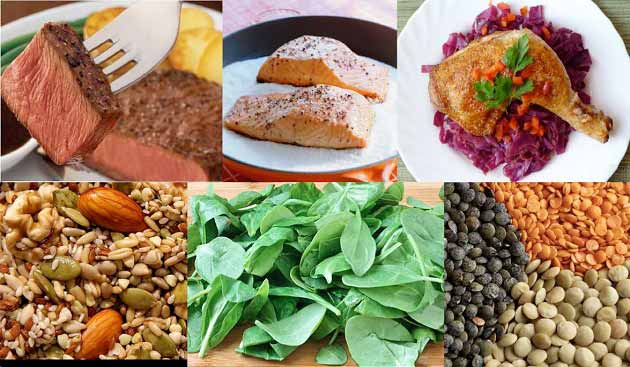Has somebody told you that you look pale by looking at your skin, nail bed or eyes? Do you get tired easily or have low energy levels, feel shortness of breath or have difficulty in exercising? Have you had cold hands and feet for short periods during the day, over a long time? Well its quite likely that you have iron deficiency.
This mineral is important for the vital functioning of the body, it strengthens the immune system, helps in carrying oxygen to the tissues and generating energy. Iron deficiency is the most common encountered deficiency followed by zinc and is commonly seen in young women, athletes, children and in pregnant mothers. Apart from the lack of iron in the diet, sometimes certain medical as well as physiological conditions also lead to deficiency of iron in the diet. Always consult a doctor to rule out the conditions.
Common sources of iron are animal meat (lamb, beef, chicken, pork) and eggs as well as plant sources like various types of beans, cereals, dried fruits, nuts and dark leafy greens. Various iron fortified products are also available in the market. Our body is unique, it can regulate the input and output of iron to maintain a balance.
About 70 % of iron is present in Hemoglobin in the RBC’S. The Hemoglobin molecule is made up of “heme” the non- protein part consisting of iron and “globin” the protein part. Our food contains iron in two forms –heme that is obtained from the animal sources and non-heme from plant sources. Now here is the irony: While the non-heme part of the Hemoglobin constitutes the major part of our diet, research studies have shown that heme has a better rate of iron absorption (15%-35%) as compared to the nonheme part. Below are some additional research studies about food and its impact on iron absorption:
• Vitamin C enhances the absorption of non-heme iron whereas calcium and phytates from legumes act as retarders and decrease the rate of non-heme absorption.
• Coffee and tannins in the tea have been reported to decrease the rate of absorption by about 90%.
• Calcium also hinders the rate of iron absorption as a result people who take iron and calcium supplements should avoid taking them together or consuming iron rich food along with calcium.
Research studies have reported that omnivores have better iron stores than the vegetarians hence, the vegetarians have a greater risk of having iron deficiency because of the lower availability of iron in plant sources. Similarly, athletes should always watch out for having extra dose of iron especially women.
Here at Eatology, meals and recipes are created keeping the nutritional value of food and its scientific evidence in mind along with flavor and taste.
The Punch Lines are
1. Eat Vitamin C rich foods like oranges, kiwi, lemons, grapefruit, strawberries and broccoli for better iron absorption.
2. Avoid tea, coffee while eating iron rich foods. Keep a gap of 1-2 hours between drinking tea/coffee and consuming iron rich foods.
3. Avoid taking calcium supplements when consuming iron supplements or iron rich food.
4. Increase the consumption of the iron rich foods if you exercise a lot.
References:
A Lopez, P Cacoub, Iain C Macdougall, L Peyrin-Biroulet. 2016. Iron deficiency anaemia. Lancet 387:907-916.
KL Beck, CA Colon, R Kruger and J Coad. 2014. Dietary Determinants of and Possible Solutions for young women living in industrialized countries: A Review. Nutrients 6, 3747-3776.
AJ Reeves, Mc D Wicks, AJ Patterson, D Barker et al. 2017. Calculation of Heme Iron intake and its role in the development of iron deficiency in young women from the Australian Longitudinal Study on women’s health. Nutrients 9, 515: 1-12.




